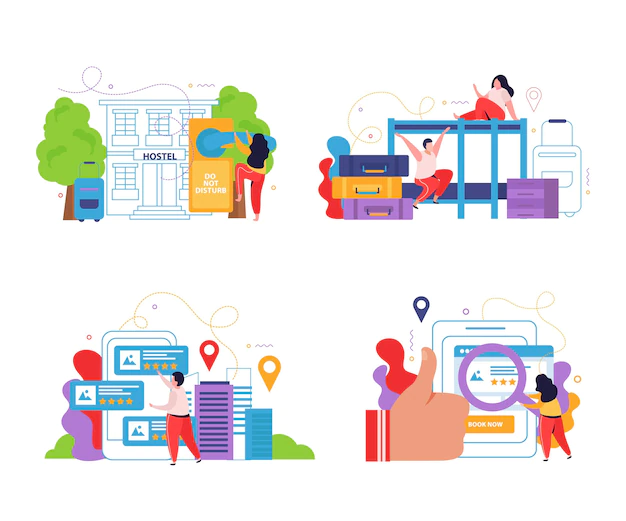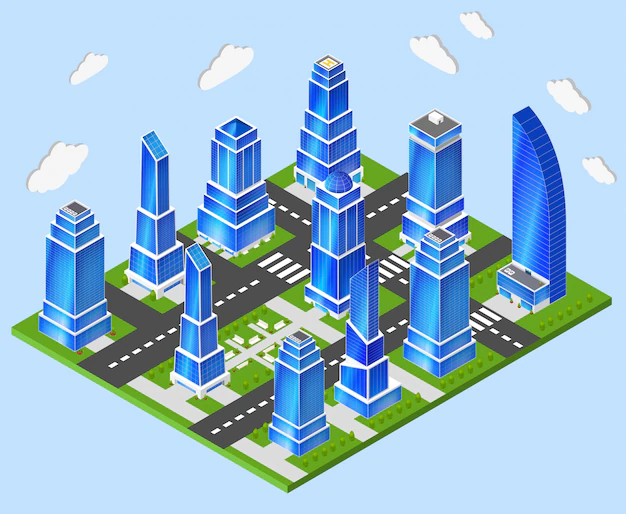Let's Discuss
Enquire Now
Authorities and urban planners have long lacked access to city data that might reveal complicated patterns and linkages among elements that affect urban growth. In some cases, collecting data at periodic intervals is too time-consuming or expensive, while in others, unexpected or unforeseen conditions, such as a catastrophe like COVID-19, invalidate earlier predictions.
However, this is quickly evolving, as new technology generates the new potential for urban development. Artificial intelligence and machine learning advancements can contribute to understanding urban communities and generate valuable insights from genuine data collected through mechanized models which provide a much clearer view of the matter on the surface than conventional methods.
Artificial intelligence in urban design can aid urban planning in a variety of ways. Here are a few great examples. Artificial intelligence (AI) has been around for quite a while, but it is only just slowly finding its way into our daily lives. Many key aspects of our environment are powered by AI, from our phones to modern marketing methods.
Artificial intelligence aids urban designers and planners in developing customized urban landscapes that are guided by data-driven strategies. With actual data, AI can help deeply integrate effective policies into the urban environment. AI can assist city planners in determining routes that aid in larger traffic, balanced public transportation, and even more economical utilities. AI can help urban planners create more responsive and efficient urban settings that benefit the people who are living there.
AI is now being applied to design major projects, especially in the field of urban design. Countless magnificent cultures and cities existed in the ancient world. These efficient cities, on the contrary, were the result of years of planning.
Thankfully, we live in an age where this process has accelerated dramatically. This significant increase in planning speed is due to the incorporation of modern technology, such as artificial intelligence, which can aid urban design and planning.
Artificial Intelligence in Urban Design

The layout of towns and cities, as well as the streets and places within them, is known as urban design. It is a cutting-edge and crucial field that has a direct impact on residents’ psyche and behaviour.
Artificial intelligence can aid urban planning in a variety of ways. Here are a few good examples:
- Public Transport: Many public transport services, particularly in more developed countries, rely on computers to improve their service. Artificial intelligence systems are frequently used by these computers to assist in the process. For example, AI is implemented in robots or platforms that provide essential information to travellers. It’s also used to make real-time spreadsheets that keep track of passenger numbers, bus timings, traffic conditions, and routing.
- Air Quality Monitoring: Many aspirator devices use artificial intelligence to assist them to detect the quality of the air and disseminate results. Artificial intelligence programs can be used to draft things like levels of pollution, fossil fuel particle sizes in the air, and upcoming air quality predictions.
- Traffic Management: Too often, we witness individual signals and lights, and perhaps even a traffic inspector, attempting to control the flow of traffic from all directions. Fortunately, several cities have progressed past this phase by implementing AI-based traffic control systems.
- Security Cameras and Monitoring: Most state security cameras are linked to apps that can decipher a person’s facial appearance and use appropriate databases to authenticate who they are. These artificial intelligence-powered apps have aided in the improvement of protection in numerous urban areas. Certain surveillance gadgets also have particular sensors for detecting specific stimuli and can inform the police when an offence, such as a robbery, is going to arise.
Certain AI systems could also check the number of automobiles parked in a secured area and prevent congestion in parking lots. They can also assist in ensuring that people do not park in prohibited locations.
- Smart Waste Management Systems: It’s no surprise that cities generate a tremendous quantity of waste every day. The efficient disposal and handling of this trash is often a challenge for city development. Fortunately, there are a number of AI-based programs which can assist with the task.
Special AI-enabled cameras can recognize rubbish that has been tossed on the street. They can also tell what kind of waste is being thrown away.
Some dustbins are equipped with artificial intelligence-based devices that alert authorities when they are pretty much full and need to be disposed of. This way, trash cans are only checked and emptied if there is a need, allowing city management to save more money on cleaning.
As you’ll see, artificial intelligence (AI) has now become a common place feature in many urban areas. These localities are known as “smart cities,” and they are expected to increase in number over the next few years.
Data Collection and AI in Urban Design
Data abounds in today’s digital environment. Much of this information is a direct outcome of how individuals who use data-gathering tools act. Our cell phones acquire a lot of information and send it to bigger companies, who then utilize it to make our lives better.
Here’s an example of how information obtained via cell phones might aid in urban planning:
Mobile users rely on cellular towers to send out airborne signals. Our smartphones would have been unable to connect to other gadgets or the network without such signals. Each tower, however, has a specific limit beyond which it cannot discharge its transmissions.
Our smartphones constantly monitor signal power and frequently communicate this data to telecommunication firms, which then store the information. These figures can assist frequency suppliers in determining how effectively (or poorly) their customers’ gadgets respond to tower signals.
Consider that the signals in a particular portion of the city are particularly bad. In that situation, utilizing data acquired by AI systems on our devices, the telecommunications services provider will be informed. This would assist them in resolving the situation faster, ensuring that all inhabitants inside an urban space receive consistent transmissions.
On the other hand, by applying algorithms regarding traffic data and statistics, AI can assist urban planners in developing more efficient transportation networks throughout the city. A.i. could also help cities optimize their energy and water consumption, minimizing losses of these precious resources.
Conclusion
Artificial intelligence is a fascinating and transformative subject. Although it is still in its infancy, the present state of AI can assist in the resolution of a variety of issues that plague both big and small communities.Our team of experts in Dexlock provides our clients with the best services related to AI through which you can make any of your AI-related queries possible.
Have a similar project in mind? Contact us here to give wings to your dreams!
Disclaimer: The opinions expressed in this article are those of the author(s) and do not necessarily reflect the positions of Dexlock.



